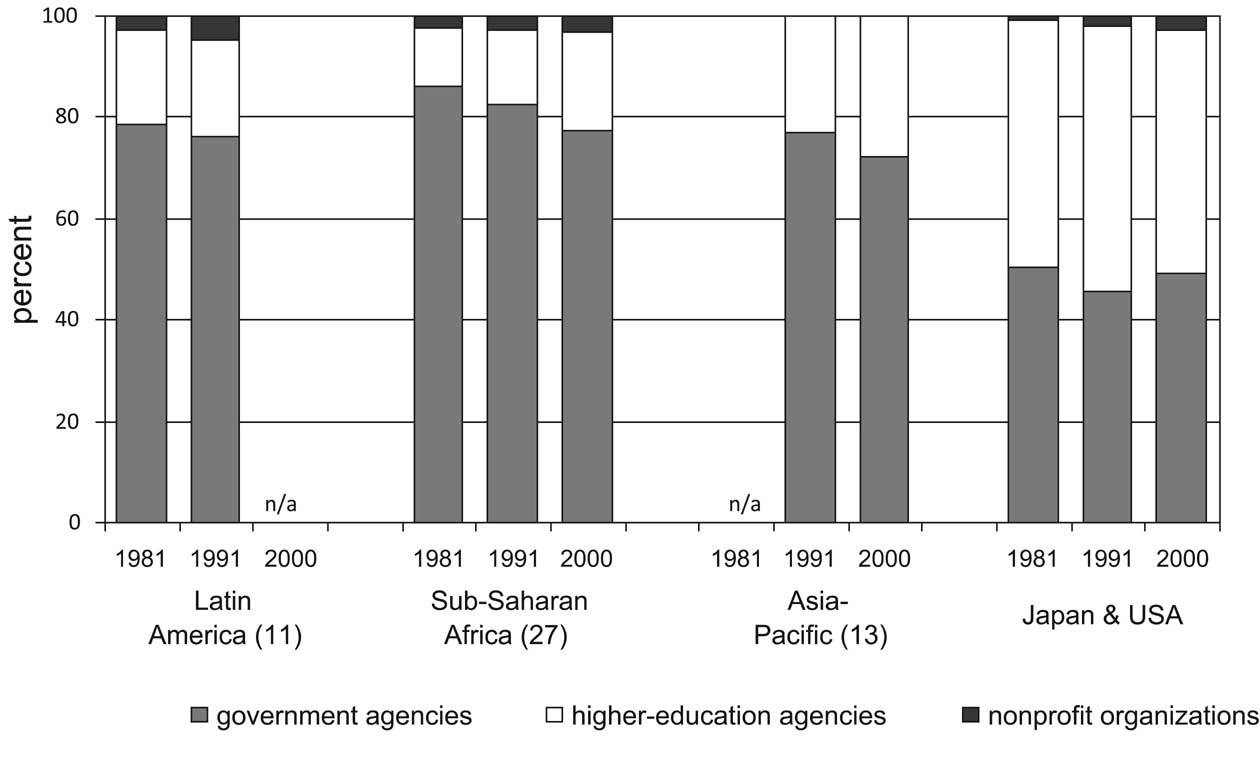countries and between regions in the structure of the public research sector (Figure 8-3). Public research in the United States is done mainly in state agricultural experiment stations located primarily in colleges of agriculture and in federally administered, but often regionally located, laboratories. A large share of public agricultural R&D in Asia-Pacific and Latin America is conducted by government agencies (about three-quarters of the total). This is similar to the government agency share in a 27-country sub-Saharan African total. A small, but growing proportion of public agricultural research in Latin America and sub-Saharan Africa is conducted by nonprofit institutions. Nonprofit institutions are often managed by independent boards not directly under government control. Many are closely linked to producer organizations from which they receive the large majority of their funding, typically by way of taxes levied on production or exports (see 8.3.3).
8.1.1.2 Private sector spending
Agricultural R&D investments by the private sector have grown in recent years and in the industrialized world now account for more than half of the sum of the public and private research investments. Although private sector performed agricultural R&D appears to have increased in some developing countries, overall the role of the private sector is still small and will likely remain so given weak funding incentives for private research. In addition, many of the private sector R&D activities in developing countries
focus solely on the provision of input technologies or technological services for agricultural production with most of these technologies produced in the industrialized world. Private sector share of total agricultural research investments are estimated at 37% (Table 8-3). Most of which was performed in the industrialized countries (94%) where they spent on average more on agricultural research than the

Figure 8-3. Organizational orientation of public agricultural R&D, 1981, 1991, 2000. Source: Pardey et al., 2006b based on ASTI data.
Note: The number of countries included in regional totals is shown in parentheses. The reported shares for Japan and the United States may understate the role of nonprofit institutions. n/a indicates not available.